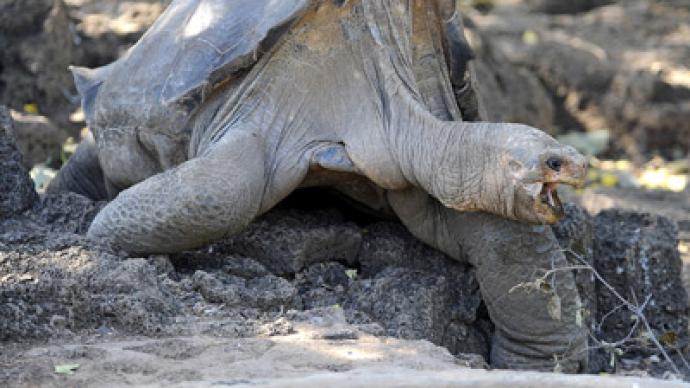Last-of-his-kind giant Galapagos tortoise found dead

The "rarest animal alive today", according to the Guinness Book of World Records, has been found dead. The conservation icon named Lonesome George passed away on Sunday of unknown causes, according to the Galapagos National Park.
He was thought to be about 100 years old, which is not a venerable age as far as tortoises are concerned. "Sunday morning the park ranger in charge of looking after the tortoises found Lonesome George; his body was motionless," the head of the Galapagos National Park, Edwin Naula, told Reuters. "His life cycle came to an end."Lonesome George weighed 88 kilograms and touted a 102 cm long shell. He was the last member of a species of giant tortoise from La Pinta – one of the smallest islands in the north of the Galapagos archipelago. Now the Pinta Island tortoise subspecies is officially extinct.The Galapagos National park plans to carry out an autopsy to determine what may have killed the tortoise.Up until 1971, the last reported sighting of a giant tortoise on Pinta Island had been in 1906. In 1971 a scientist studying snails on Pinta Island saw a solitary tortoise in the distance. However, it was not until 1972 that National Park wardens found Lonesome George on the island. From that point on he became a symbol of Ecuador's Galapagos Islands, which attracted some 180,000 visitors last year.The tortoise was called "Lonesome George", a name that derived from being the only surviving specimen of his species, and "George," after the US actor George Goebel, who called himself "Lonesome George" in a TV program.Many years later, Lonesome George was placed in a corral with female tortoises from Wolf Volcano on Isabela Island. The idea was that by placing these animals together, Lonesome George would pass along at least some of his genes into future generations. Despite laying eggs twice, they were all infertile.Since then, zoos around the world have been offered a reward of $10,000 dollars for a Pinta Island tortoise female, but the reward has not been claimed.The Galapagos National Park is now considering embalming George's body so that it can be displayed in the park.














